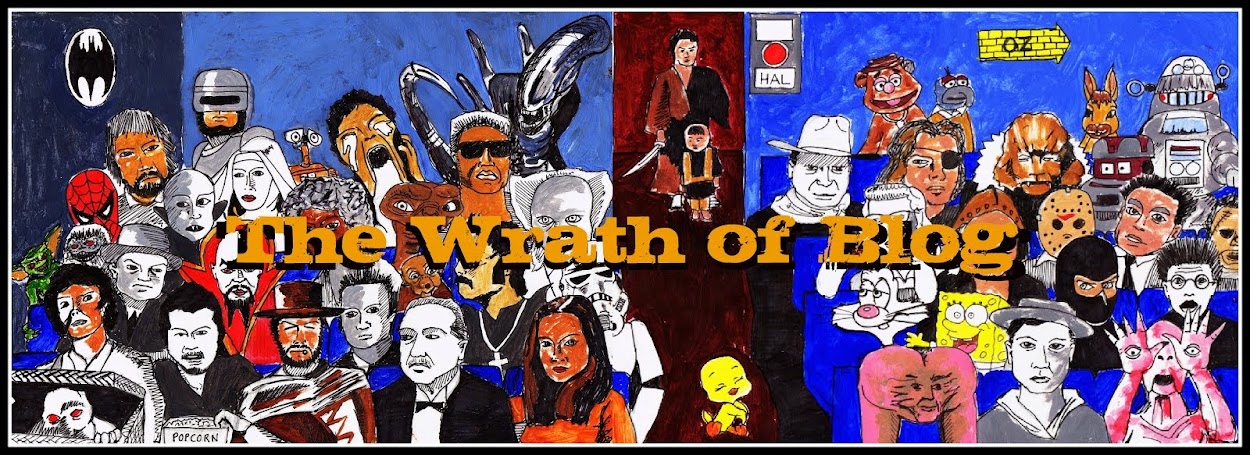 A collection of genre tropes inform this film. Firstly, the most obvious post-apocalypse setting gives is it's sci-fi credentials; this theme is ever-present at this moment in cinema, and has provided varying quality (The Road (2009), 2012 (2009)), the latter being an awful example). Eli wonders into the town controlled by Carnegie, with the same western iconography of Clint Eastwood's Man With No Name in Sergio Leone's Dollars trilogy. Carnegie controls a blind woman, Claudia (Jennifer Beals - her character name quite possibly a reference to Claudia Cardinale), and her daughter Solara (Mila Kunis). After discovering that Eli carries the book that he has been searching for, he begins a hunt for him.
A collection of genre tropes inform this film. Firstly, the most obvious post-apocalypse setting gives is it's sci-fi credentials; this theme is ever-present at this moment in cinema, and has provided varying quality (The Road (2009), 2012 (2009)), the latter being an awful example). Eli wonders into the town controlled by Carnegie, with the same western iconography of Clint Eastwood's Man With No Name in Sergio Leone's Dollars trilogy. Carnegie controls a blind woman, Claudia (Jennifer Beals - her character name quite possibly a reference to Claudia Cardinale), and her daughter Solara (Mila Kunis). After discovering that Eli carries the book that he has been searching for, he begins a hunt for him.
I will admit that I came to this film very sceptical. A work colleague (Alice Mills), after hearing that I write reviews for this blog, suggested that I see this. The film is beautifully shot (well, it certainly has some wonderful back projections anyway). It's an interesting idea also, although not greatly realised, the concept of religiosity is carried through rather well. The film flirts with the concept that the bible has always been interpreted for use of both good and bad. Washington's character (obviously) carries and protects the book so that he may preserve its goodness, and pass it on so that it can continue to do it's supposed duty. Oldman's character however represents that darker element of representation. He sees the book as a weapon; a means to control the masses. A view that is very prevalent in attackers of the bible proper.
Whilst the film is admittedly enjoyable, it is simply a throw away piece of cinema. It possibly has some interesting ideas within it, but falters many times. In other words, it has many flaws. Whilst it represents the readings of the book, that throughout history has created such awful conflict, it also fully presents it's blind 'faith'. A line Eli states (when he is joined on his 'quest' by Solara) after being asked how he knows which way he is going - after all I'm pretty sure it does not take 30 years to walk from the east to west coast of America - he simply says 'I'm guided by faith, not by sight'. This statement does become more relevant in the closing moments of the film.
Whilst much gets in his way, Eli does make it to his destination. Alcatraz to be exact. There he finds a utopia of popular culture (literature etc) being cultivated. The head of this cultural museum is Malcom McDowell. Whilst perhaps I shouldn't say too much about the ending, it does remind me of Fahrenheit 451 (1968), in it's concept of the preservation of books in a world where they have become obsolete - and in the case of the bible, burnt after a war, presumably as it may have been the cause/blame for that war? The Book of Eli, is a flawed yet interesting film. It has the almost tired iconography of a modern CGI post-Apocalypse, yet it does attempt to manufacture something a little different from some of the other crop of the same story structure. It's not just a story of survival from vicious hoards of wanderers, scavengers etc. It does weave into this the preservation of ideas; the concept that the written word has something more powerful in it's presence in human consciousness.
I've not looked into it, but it would be interesting to hear the reaction of the Christian church (in all of its many manifestations). Whilst not explicitly, the film highlights the fact that the written form (and particularly the bible through history) has been mis-interpreted - or even purposefully re-read - to fit whichever form of control and repression that particular society feels it needs to provide.
Directed by: Albert Hughes, Allen Hughes
Starring: Denzel Washington, Gary Oldman, Mila Kunis, Ray Stevenson, Jennifer Beals, Michael Gambon, Tom Waits
Country: USA
Rating: ***
Directed by: Albert Hughes, Allen Hughes
Starring: Denzel Washington, Gary Oldman, Mila Kunis, Ray Stevenson, Jennifer Beals, Michael Gambon, Tom Waits
Country: USA
Rating: ***
Marc Ivamy




















